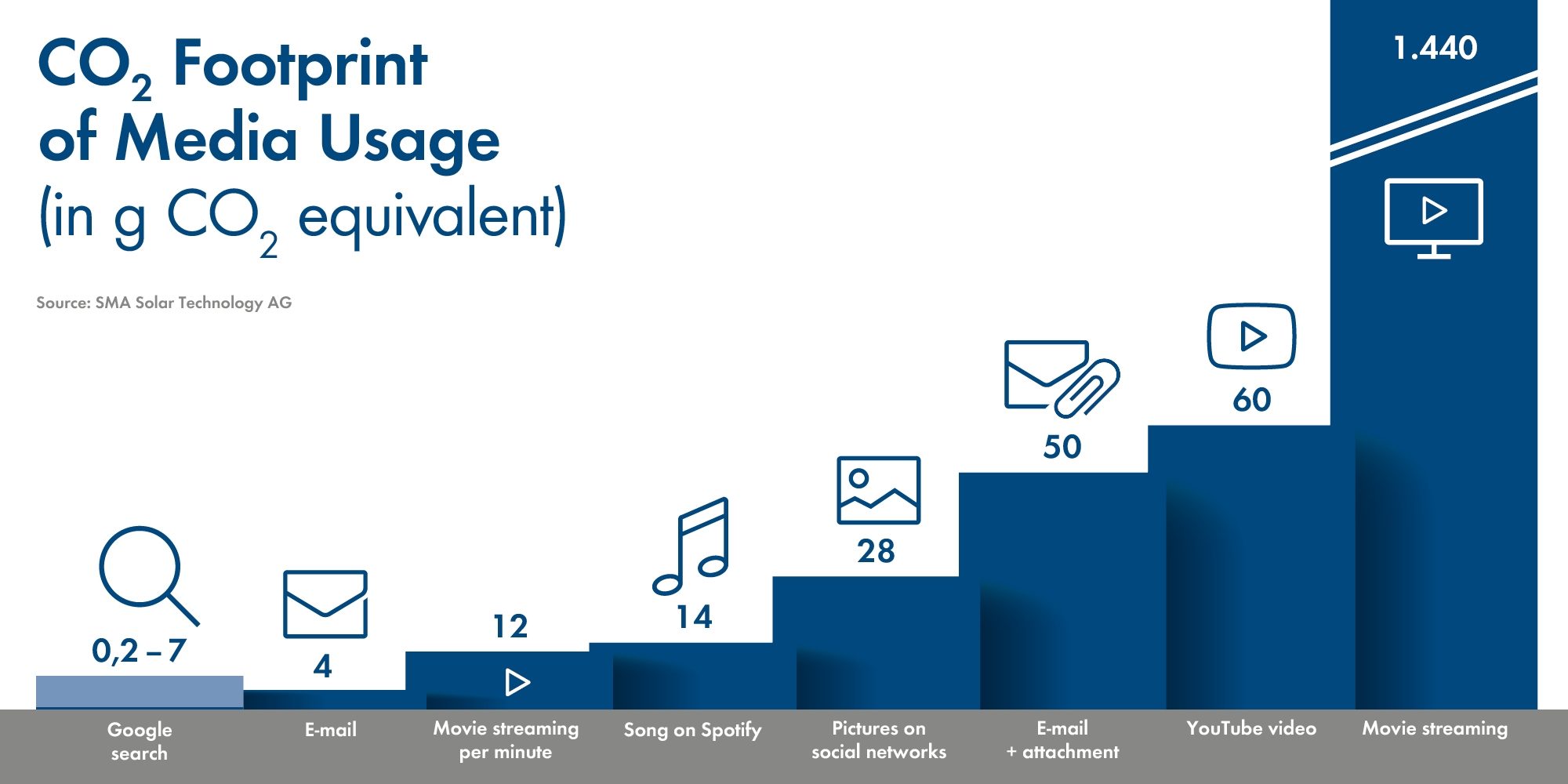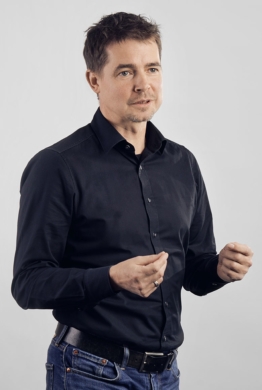How sustainable is digitalization really?

Digital traffic on the Internet consumes as much CO2 as air traffic. I was very surprised to learn this. After all, we are always hearing that digitalization is helping us use resources more efficiently. So is digitalization more sustainable or not?
If you look only at the effects of certain products and services, such as smart home systems, digitalization is certainly a big plus – especially when it comes to the sustainable use of energy. In addition, web-based meetings are currently saving us a wealth of driving and air miles, and thus CO2.
But let’s face it, the onward march of digitalization also means that each of us is accumulating and sending a lot of data. Cloud computing, in particular, makes this possible in a convenient and practically limitless way – we share emails with attachments, photos, films and much more with our friends and coworkers. In Germany alone, over one billion emails are sent every day. Many of them also have files attached, which multiply over and over again and require huge amounts of storage space. Since this all happens conveniently in another place, namely in huge data centers, we don’t think about it at all.
IT applications and devices are responsible for 800 million metric tons of CO2
The Bitcoin currency alone consumes as much energy as the country Denmark.
In the last ten years alone, the energy consumption of data centers has increased by 40%. After all, they need electricity to power the servers necessary to process huge volumes of data. An abundance of energy is also used to cool these servers. As a result, IT applications and devices emit approximately 800 million metric tons of CO2 per year. The Bitcoin currency alone consumes as much energy as the nation of Denmark.
In addition to personal decisions about how to get around that depend on a wide variety of factors, employers in particular can actively encourage their employees to adopt particular behaviors with regard to transportation.
With mobility management as part of its sustainability strategy, SMA has set itself the goal of promoting efficient, environmentally friendly and socially acceptable transportation.
And what is SMA doing?
This issue requires companies to act in a number of different ways. Larger companies often operate their own data centers. These should be as efficient as possible and be powered by renewable energy.
SMA opted for a resource-saving approach right from when its data center was built. With a power usage effectiveness value of 1.25 (PUE is a technical key figure that can be used to show the energy efficiency of data centers), we won the German Data Center Award for Energy and Resource Efficiency in 2013. In addition, the supply of electricity at SMA has long been based on achieving CO2 neutrality, with a constantly increasing proportion of regional, decentralized renewable energies. Recently, more and more server performance has been reduced. This has resulted in energy savings of about 38% in the last two years alone.
SMA is focusing ever more on cloud-based solutions; in other words, on outsourced energy consumption. However, SMA has chosen a provider whose data centers are operated with an even more efficient PUE value than SMA’s own data center. Of course, these data centers are also CO2 neutral.
Ecosia aiming for sustainability and planting trees
With the search queries at SMA, Ecosia would plant over 125,000 trees annually.
However, companies have other opportunities to make a contribution to the sustainable use of digital media. Let’s take Google searches as an example. Every search query consumes 2 g of CO2. This doesn’t sound like much to begin with, but extrapolated to all employees over one year at five searches per day, this amounts to almost eleven metric tons of CO2.
SMA is currently introducing a new browser for all employees to use. The Ecosia search engine is to become the standard search engine at SMA. The idea was submitted by several employees who already use Ecosia at home.
Ecosia not only runs its data centers on renewable energy sources to minimize the impact of searches, but also plants a tree free of charge with the revenue generated by a batch of searches. Ecosia also protects your privacy.
This shows that you can protect the climate in two ways at the same time with just a click of your mouse, even sitting at your desk. You can save CO2 and plant trees.
How you can use digital media and be energy-conscious
Streaming films alone consumes around 300 million tons of CO2 per year, which is one percent of the world’s CO2 emissions.
The right behavior seems to be so simple, but let’s not delude ourselves. We do not see the effects of digitalization, as the emissions are far removed from us. But we can all make a simple contribution. Here are a few suggestions:
- Take a look through your digital media. How full is your email inbox? How many photos are lying unused on end devices or somewhere in the cloud? Clear out what you don’t need. It will be liberating. And if you want to archive something, the most efficient ways are still trusty old storage media, such as CDs, DVDs or external hard drives.
- We receive advertising emails just as unwillingly as we do junk mail through the post. Take a look at what newsletters you receive this way, and then unsubscribe.
- Stream less music and fewer films. Streaming one film consumes almost 1.5 kg of CO2. Worldwide, this is about 300 million metric tons of CO2 per year. This corresponds to 1% of global CO2 emissions. So you could maybe go back to using CDs and DVDs. And if you are streaming, surely a lower resolution is plenty.
- When choosing your cloud provider, make sure that their data centers are powered by renewable energy.
- Set your search engine to Ecosia at home, too. That way, your own statistics will show you how many trees have already been planted as a result of your clicks.
This all sounds very simple, so why not just start? In their own way, everyone can make a contribution to ensuring a future worth living for future generations.
Find out more about sustainability at SMA on our website.




Feel free to contribute!